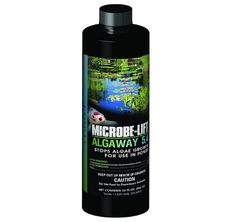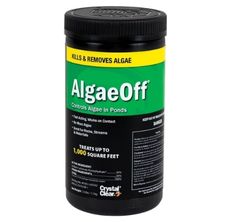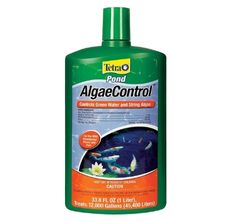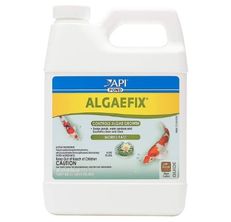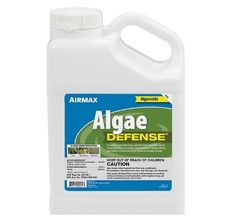Algae can be a real problem in your garden, not least because it makes the surface of your pond, lake, or water feature look unsightly. But it’s not just the appearance you should worry about, as algae can also contain toxins, so it’s crucial to keep it under control. In this review guide, we’ll discuss the best pond algae treatments of 2024 so you can take back control of your garden ponds and more.
Our best overall selection is the MICROBE-LIFT Algae Control Treatment, recognized for its quick results and long-lasting use. Read on for more helpful treatments.
Our Top Picks For Pond Algae Treatments
Pond Algae Treatments: A Buying Guide
Algae build-up can be quite a nuisance. They give your pool or pond an unhygienic look, cause foul odor, and lead to many dangerous diseases. Therefore, from both hygienic and aesthetic perspectives, algae control treatment is paramount. When selecting the best pond algae treatment, it is important to consider a variety of product features. This buyer’s guide will provide an overview of each of the features so that you can make the best possible decision for your pond.
Pond Algae Treatment: Things to Consider
Amount of active ingredients
The amount of active ingredients used in the pond algae treatment is an essential factor to consider. Look for treatments that contain an appropriate amount of active ingredients for your tank size and type. You should avoid treatments with too little or too much of the active ingredients, as this could cause an imbalance in the pond environment.
Effectiveness
Different types of algae require different treatments. Be sure to select a product that has proven effective against the particular type of algae present in your tank. Research reviews from other customers to determine the effectiveness of the product against your specific type of algae before making a purchase.
Safety for aquatic life
When selecting a pond algae treatment, check to see if it is safe to use around other aquatic life. Different products use different active ingredients, which may not be safe for certain species of fish or invertebrates, so make sure you are aware of any safety precautions listed on the packaging before use.
Compatibility with other additives
Make sure any additives you plan on adding to your pond are compatible with your chosen algae treatment by checking its instructions for information about compatibility with other chemicals or materials frequently used in pond setups, such as water conditioners, beneficial bacteria cultures, pond dyes, etc., so as not to cause any adverse reactions when mixed in.
Ease of application
Select a product that is simple and easy to apply in your pond environment. Some products come pre-mixed, which eliminates the hassle of having to mix them yourself before applying them in the tank. Others may have more complicated directions and require special equipment, such as a water testing kit, to ensure proper dosage and application frequency.
Environmental impact
Look into products that have eco-friendly ingredients or are biodegradable so that they don’t harm natural environments or living organisms when released into them, such as rivers or lakes, near your pond setup location after use or disposal in domestic drains, etc. Additionally, some products may be toxic if released into waterways or consumed by wildlife so it’s essential to research this aspect before purchasing.
Long term effectiveness
Some pond algae treatments only last for weeks or months until reapplication is necessary. In contrast, others can remain effective for extended periods after a single initial application, such as six months or more. Consider this when choosing, so you don’t have to reapply it at frequent intervals throughout the year constantly.
Cost-effectiveness
Consider the cost per application when deciding which treatment is the most cost-effective. Some products may seem cheaper at first but can be more expensive overall because they require multiple or more frequent applications than others do. Compare prices and look for value in terms of cost per application before making a purchase decision.
How To Prevent Algae Build-up in the First Place
The best way to prevent algae from building up in the first place is by maintaining proper water conditions. This means keeping the pH level stable and avoiding any sudden changes in light intensity or temperature in the pond, as these can create ideal conditions for algae growth. Additionally, regular water changes should be done as this will help flush out any waste products that could contribute to excessive nutrient levels, which can fuel algae growth. Finally, regularly cleaning any surfaces or decorations in your pond can help reduce algae as well by removing organic matter, which can serve as nutrients for growth.
People Also Asked
How long will it take for the pond algae treatment to take effect?
The time it takes for a treatment to take effect depends on the type of treatment and the amount of algae present in the water. Chemical treatments usually take effect within 24-48 hours, while physical treatments may take several days or weeks to become fully effective.
How often should I use the treatment?
Depending on the type of treatment, you may need to use the treatment multiple times over several weeks or months to maintain effective algae control. Always follow package instructions carefully when using any chemical or physical treatments.
Does one treatment work on all types of algae?
No, different algaecides are designed to be effective against specific types of algae, so it is important to identify the type of algae before choosing an algaecide. Different types of algaecides will be more or less effective depending on which type of algae they are targeting.
Are there any special instructions for using different treatments?
Yes, different treatments have different instructions that must be followed carefully to ensure their effectiveness and minimize harm to humans and aquatic life alike. Always read product packaging carefully before using any kind of pond algae treatment.




